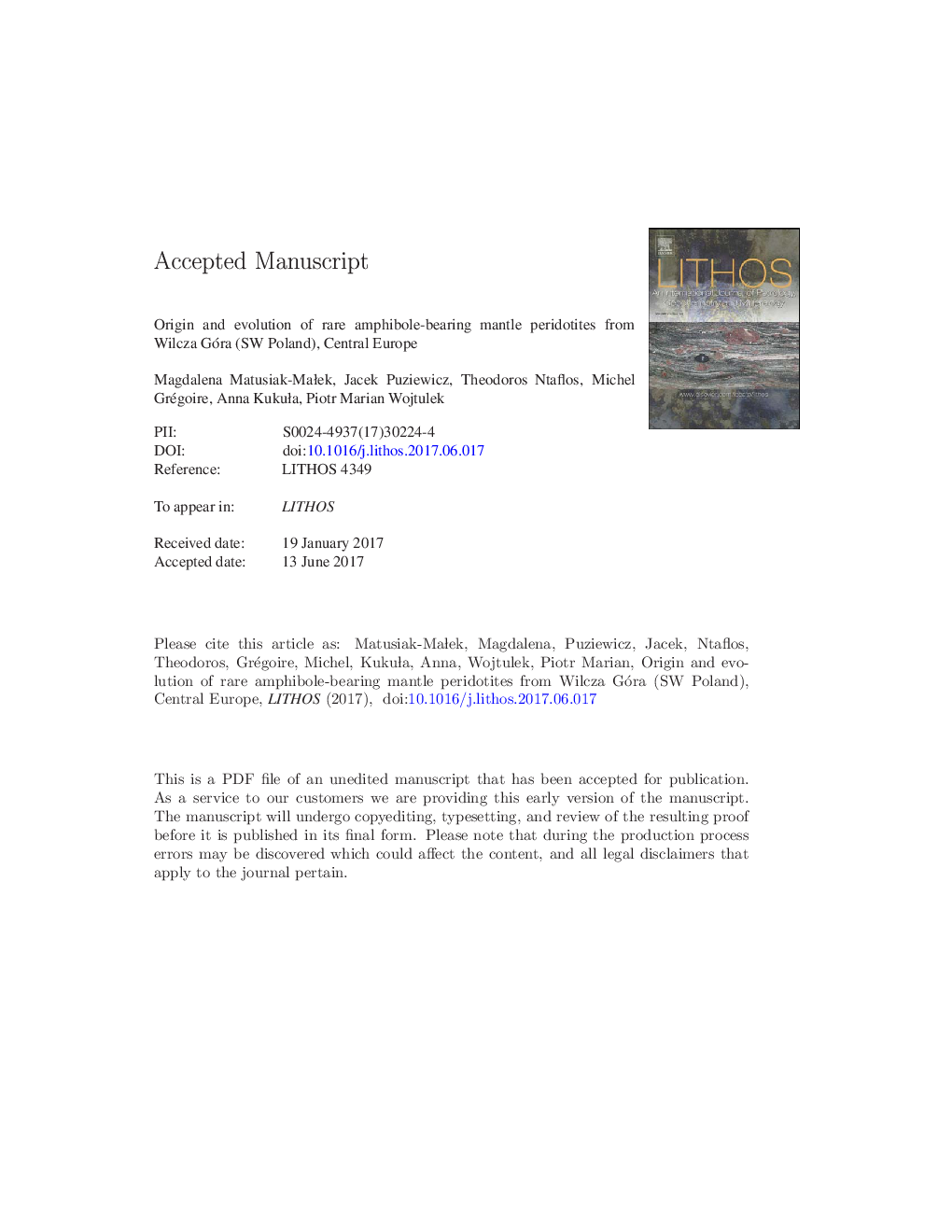| Article ID | Journal | Published Year | Pages | File Type |
|---|---|---|---|---|
| 5784234 | Lithos | 2017 | 76 Pages |
Abstract
Xenoliths from Wilcza Góra record a polyphase lithospheric mantle evolution, starting with melting which extracted ca. 30% melt from the protolith and left a harzburgite residuum depleted in Al, lacking clinopyroxene and containing rare Cr-rich spinel. This residuum was later overprinted by chromatographic metasomatism by carbonated hydrous silicate melt related to Cenozoic volcanism. The metasomatic agent was locally hydrous enough to enable amphibole to crystallize. The Group C pyroxenites formed directly from the metasomatic melt or during peridotite-melt reactions at high melt-rock ratio. The melt is inferred to have percolated through the wall-rock peridotite, decreasing its amount and changing composition (and that of the crystallizing clinopyroxene and amphibole) as it differentiated chromatographically from Groups B to A. Enrichment in carbonatite component occurred in the further parts of a chromatographic column. Group B peridotites closest to the source of the metasomatic agent were percolated by an iron-rich melt. The latter, aside from crystallizing clinopyroxene and amphibole, caused Fe-enrichment in the host harzburgite. Such a metasomatic history is typical for the lithospheric mantle located beneath the northern margin of the Bohemian Massif, but Wilcza Góra is the only locality, where activity of a hydrous metasomatic agent is recorded. Thus, the lithospheric mantle in this area was affected by mafic silicate metasomatic agents of variable compositions.
Related Topics
Physical Sciences and Engineering
Earth and Planetary Sciences
Geochemistry and Petrology
Authors
Magdalena Matusiak-MaÅek, Jacek Puziewicz, Theodoros Ntaflos, Michel Grégoire, Anna KukuÅa, Piotr Marian Wojtulek,
